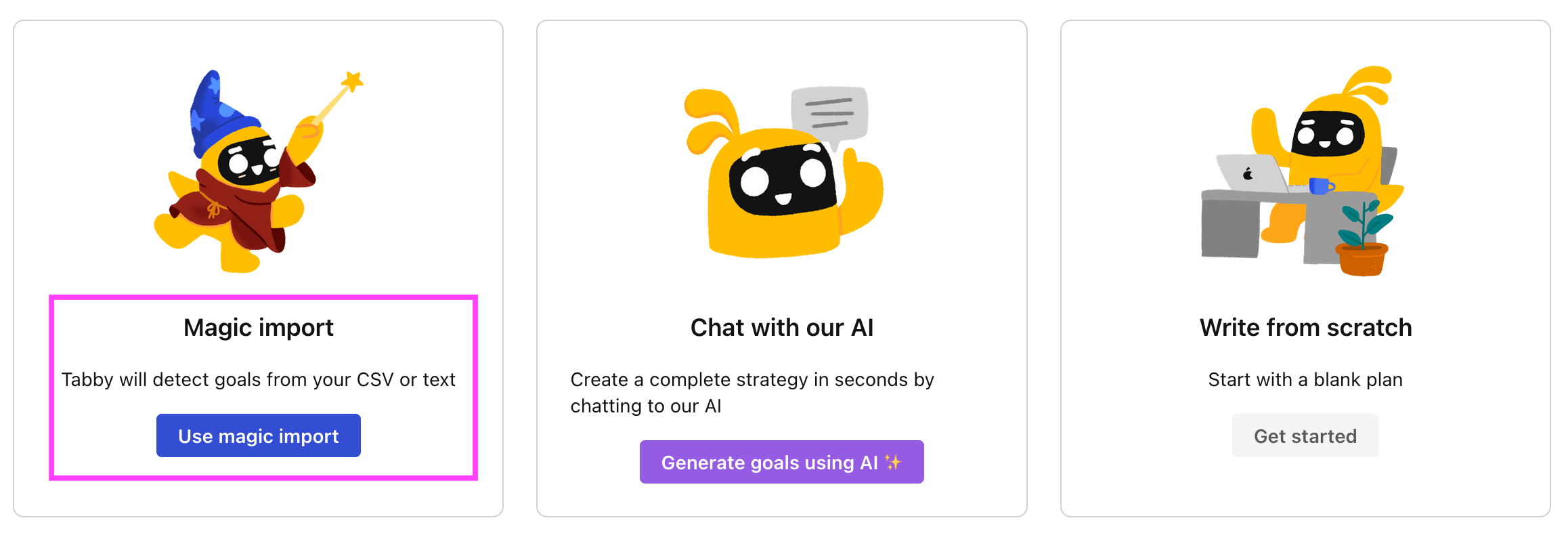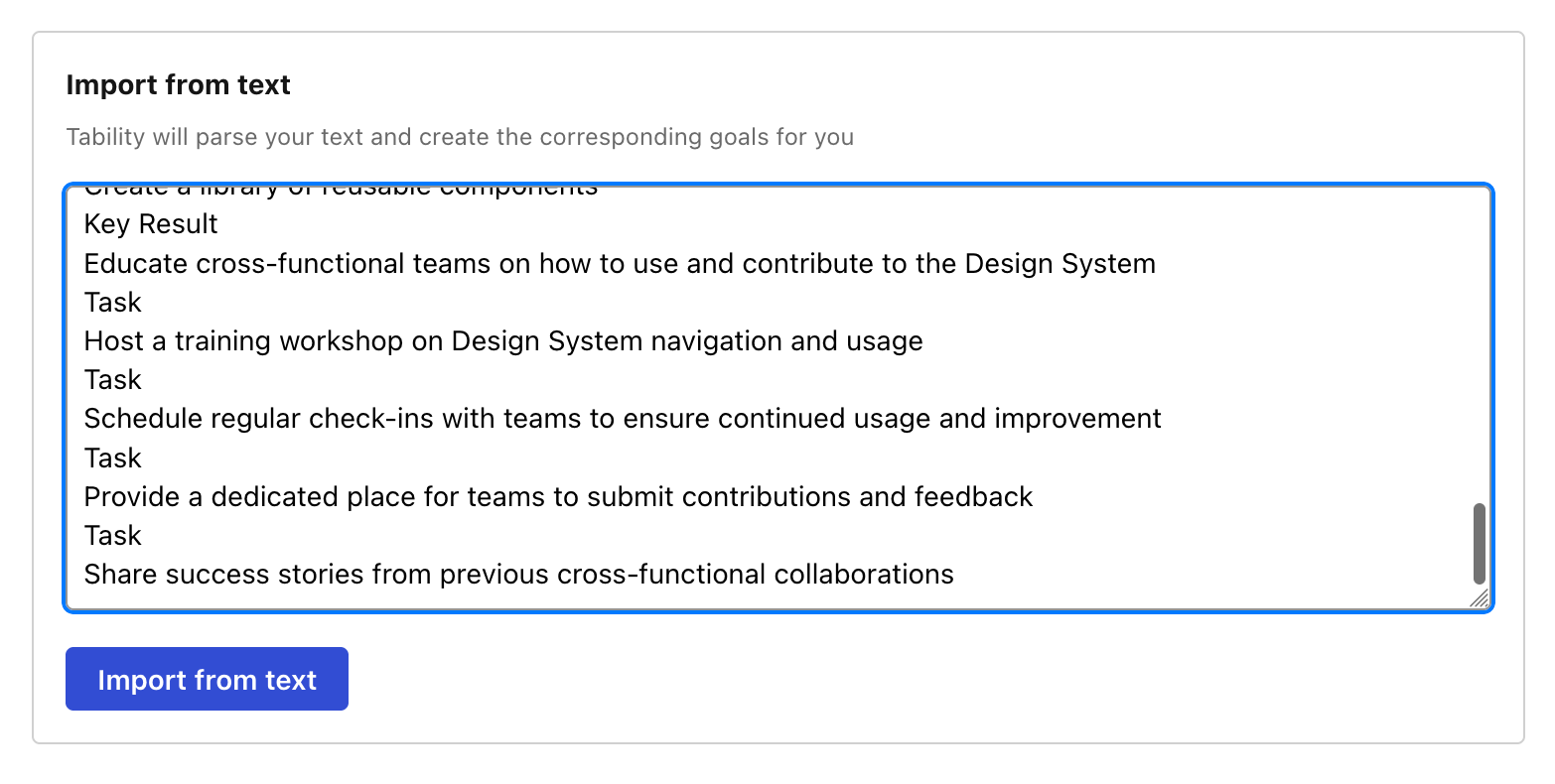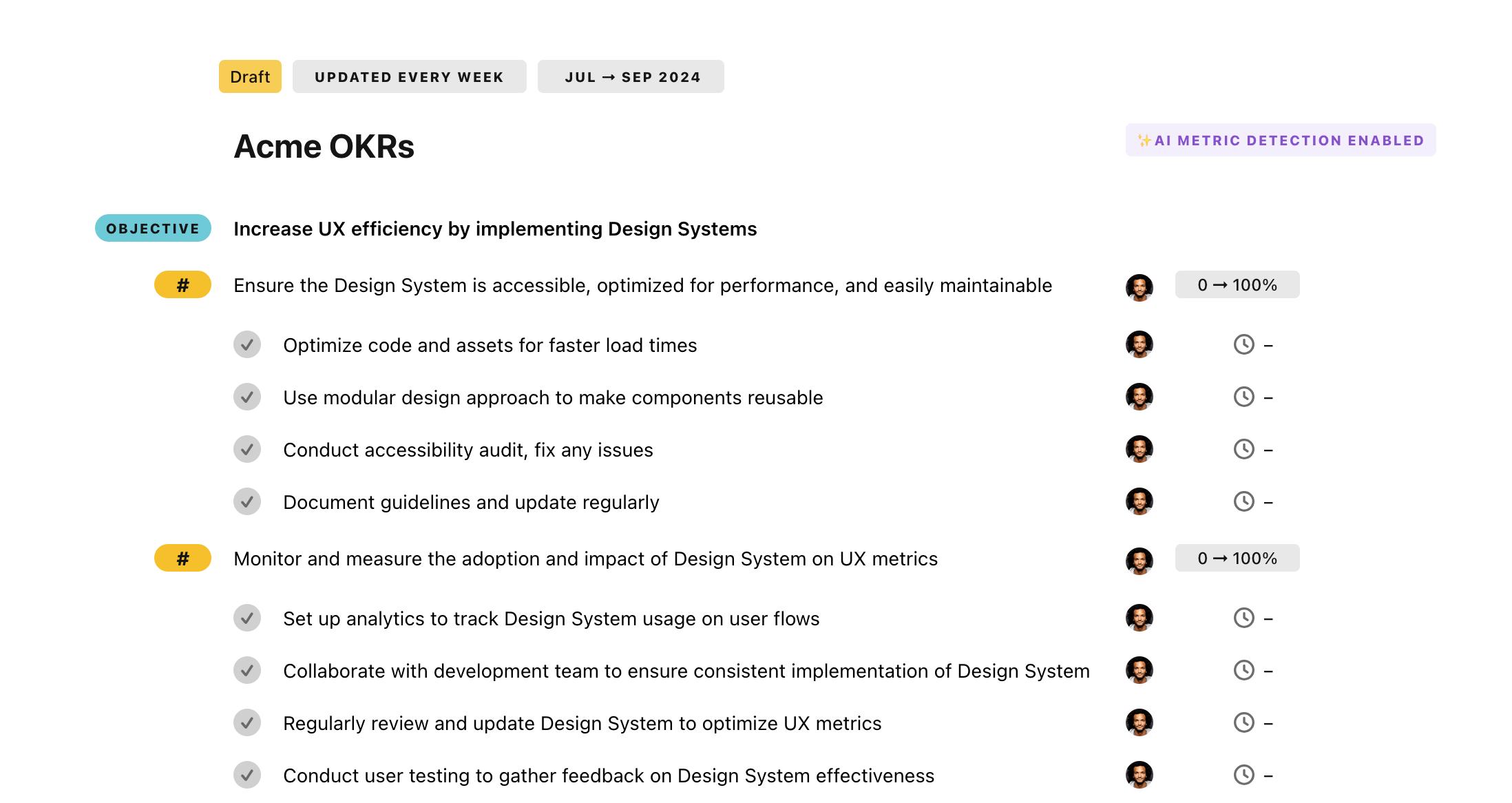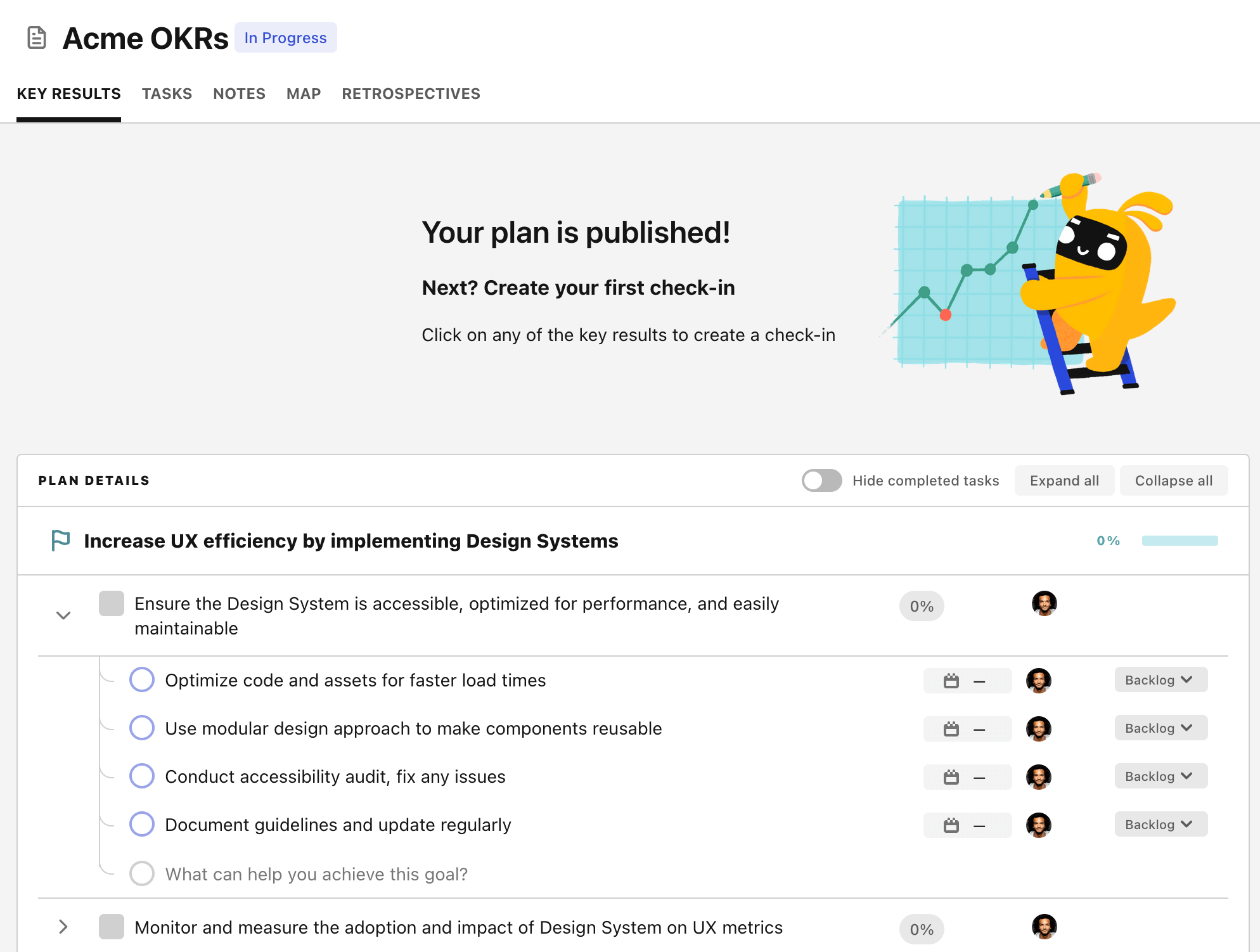OKR template to improve system performance by reducing CPU and memory utilization
Your OKR template
The second objective is to reduce the memory utilization by 30% by employing effective caching techniques. This task also involves the monitoring and adjustment of caching policies and analyzing the current memory usage to pinpoint areas of improvement. Furthermore, the implementation of efficient caching algorithms is targeted to optimize memory usage.
The third target is to decrease the CPU usage by 25% through system optimization. The initiatives taken to achieve this include scheduling regular system cleanups and disk defragmentation. Identifying applications that use high amounts of CPU via system performance monitoring is also part of the plan.
Lastly, it incorporates the strategy for implementing efficient software techniques such as multithreading to use resources more effectively. All these objectives aim to create a more efficient and faster system by reducing unnecessary utilization of resources.
ObjectiveImprove system performance by reducing CPU and memory utilization
KRAchieve a 20% overall increase in system speed post-optimizations
Periodically monitor and tweak system for optimization
Conduct a comprehensive evaluation of current system performance
Implement necessary software or hardware upgrades
KRReduce memory utilization by 30% via effective caching techniques
Regularly monitor and adjust caching policies for optimization
Analyze current memory usage and identify areas to improve
Implement efficient caching algorithms to optimize memory usage
KRDecrease CPU usage by 25% through system optimization
Regularly schedule system cleanup and disk defragmentation
Identify high CPU usage applications via system performance monitoring
Implement resource-efficient software techniques like multithreading
How to edit and track OKRs with Tability
You'll probably want to edit the examples in this post, and Tability is the perfect tool for it.
Tability is an AI-powered platform that helps teams set better goals, monitor execution, and get help to achieve their objectives faster.
With Tability you can:
- Use AI to draft a complete set of OKRs in seconds
- Connect your OKRs and team goals to your project
- Automate reporting with integrations and built-in dashboard
Instead of having to copy the content of the OKR examples in a doc or spreadsheet, you can use Tability’s magic importer to start using any of the examples in this page.
The import process can be done in seconds, allowing you to edit OKRs directly in a platform that knows how to manage and track goals.
Step 1. Sign up for a free Tability account
Go tohttps://tability.app/signup and create your account (it's free!)
Step 2. Create a plan
Follow the steps after your onboarding to create your first plan, you should get to a page that looks like the picture below.

Step 3. Use the magic importer
Click on Use magic import to open up the Magic Import modal.
Now, go back to the OKR examples, and click on Copy on the example that you’d like to use.

Paste the content in the text import section. Don’t worry about the formatting, Tability’s AI will be able to parse it!

Now, just click on Import from text and let the magic happen.

Once your example is in the plan editor, you will be able to:
- Edit the objectives, key results, and tasks
- Click on the target 0 → 100% to set better target
- Use the tips and the AI to refine your goals
Step 4. Publish your plan
Once you’re done editing, you can publish your plan to switch to the goal-tracking mode.

From there you will have access to all the features that will help you and your team save hours with OKR reporting.
- 10+ built-in dashboards to visualise progress on your goals
- Weekly reminders, data connectors, and smart notifications
- 9 views to map OKRs to strategic projects
- Strategy map to align teams at scale